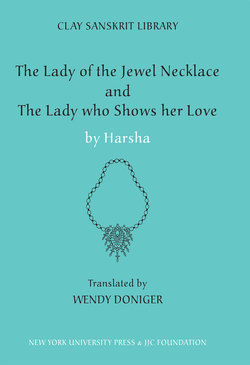Читать книгу The Lady of the Jewel Necklace & The Lady who Shows her Love - Harsha - Страница 44
На сайте Литреса книга снята с продажи.
Оглавлениеcan imagine a performance of both plays in one evening, or of both played simultaneously, like the comedy and tragedy played simultaneously in Richard Strauss’s opera Ariadne auf Naxos, or, as I once saw ‘Hamlet’ and ‘Rosenkranz and Guildenstern are Dead’ performed, first back to back and then, on the next night, interleaved.2 How very modern these plays are.
‘The Lady of the Jewel Necklace’
as an Exemplary Play
And they are also very much to ancient Indian tastes. ‘The Lady of the Jewel Necklace,’ in particular, is frequently cited by the later textbooks on literature and drama, such as the Dasa/rupa and the Sahitya/darpana, as the exemplar of various literary forms. (The earliest of these textbooks, the Natya/sastra, was written before the time of Harsha). Is it that Harsha was writing by the book, as it were, or, rather that the book (that is, the textbooks on playwriting) was written about Harsha, like the archer who displayed targets where he had always hit the bulls-eye—by drawing a target around his arrow after he had shot it? Sylvain Levi, whose book on the Indian theatre remains the standard work on the subject, suggests that ‘The Lady of the Jewel Necklace’ is quoted so profusely in the Dasa/rupa and the Sahitya/darpana in part because it is true to type, in both plot and stock characters, the classical example of the small heroic comedy (natika). In any case, Levi himself cites ‘The Lady of the Jewel Necklace’ and Kali·dasa’s ‘Shakuntala’ (Abhijnana/sakuntala) as his main examples.________
